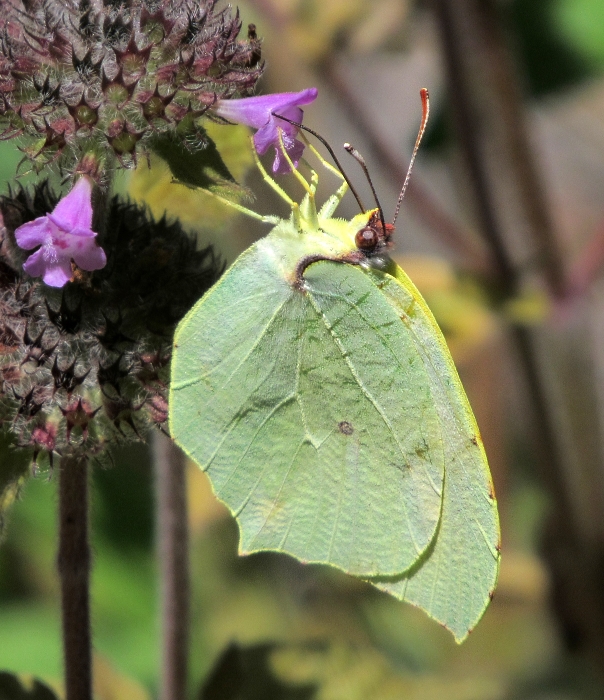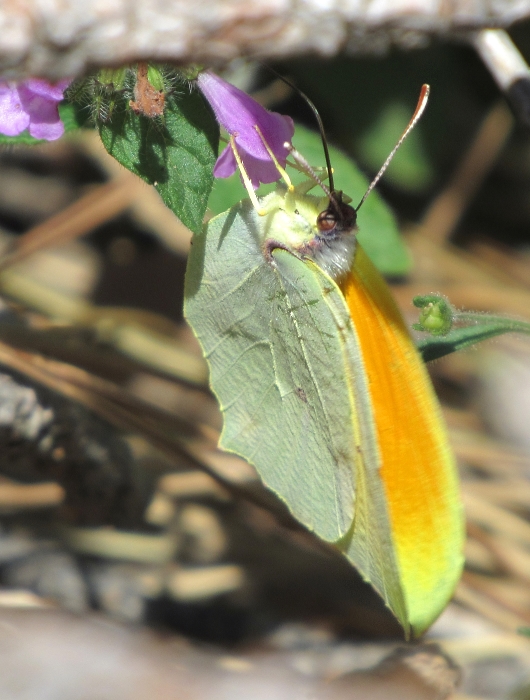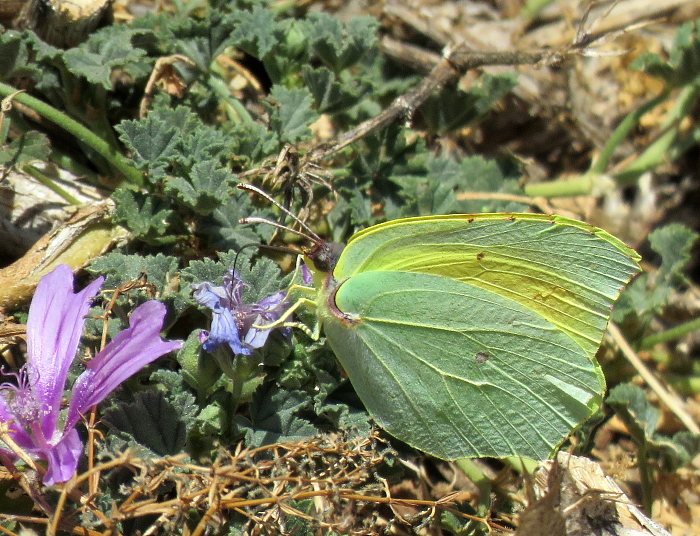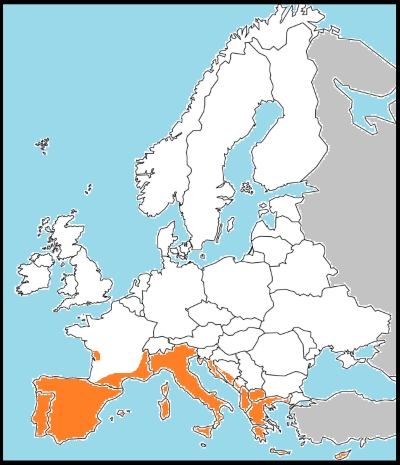
Male, Aragón, July 2017
Cleopatra
Gonepteryx cleopatra
Refresh page if pictures don't load fully:

Male, Aragón, July 2017




Female laying eggs, April 2023, Gibraltar

Female, April 2023, Gibraltar

Male, Portugal, June 1992

Male taking off, Portugal, June 1992
Yellow female from Greece. Elsewhere, females are whitish, like female
brimstones.

Distribution
The Cleopatra butterfly supplements the familiar brimstone in
the
south
of
Europe. In the Canaries it is replaced by two closely related species,
whose taxonomy has been a matter of controversy, Gonepteryx palmae
(on the island of
La Palma) and Gonepteryx
cleobule
(elsewhere in the Canaries). Both have in the past been considered
subspecies of the Cleopatra. In Madeira, Gonepteryx maderensis
flies.
The male Cleopatra is easily distinguished in flight from
other
brimstones by the flame orange
colouring on the forewings. This is not really visible at rest but is
very
obvious as soon as the butterfly takes off. The female is very similar
to the
female brimstone but usually has a more rounded hindwing and a more
obviously bicoloured (yellow costa) underside forewing. In Greece
there is a yellow female form, shown above, which closely resembles a
male brimstone except for the wing shape.
This species is said to be univoltine, though there is some
doubt
whether it is always so. In the south of Spain the summer emergers seem
to follow a bivoltine pattern but this might be due to aestivation
rather than two broods. Like brimstones, Cleopatras hibernate as adults
and emerge in early spring. Because of their southerly distribution,
this might be as early as January or February rather than March.